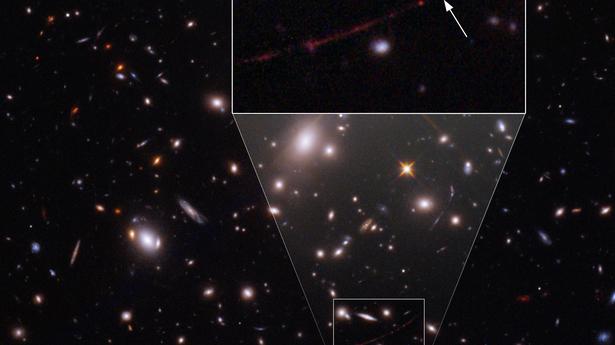
Drawing a clue from the expanding universe – redshift
The Hindu
Recently the James Webb Space Telescope released the image of Earendel, the most distant star ever s
Recently the James Webb Space Telescope released the image of Earendel, the most distant star ever spotted until now. This star was first spotted within the Hubble images and is said to be at a redshift of 6.2. This implies we are seeing light from this star which emerged just 900million years after the Big Bang.
What is red shift and what information does it give astronomers?
From textbooks we are familiar with the idea of Doppler effect – when the source of sound moves towards or away from us, there is a shift in its frequency. For example as a whistling train whizzes towards us, the frequency we hear keeps increasing as it moves towards us. Similarly when two sources of light are moving with respect to each other, the wavelength of the light changes with respect to the observer – increasing and changing towards the red side as the two move apart and this is known as red shift. If as star is moving towards us, the wavelength gets shifted to the blue side and there is a blue shift.
However, red shift or blue shift in the light is not only due to actual movement of the star with respect to us. There is also a change caused by the expansion of the universe which stretches the space between us and the distant galaxy or star. This can also contribute to the red shift.
Measuring the shift in the light of the distant star or galaxy tells us how far it is from us. The further it is from us, the higher is the redshift. For example, Earendel, the furthest star is at a red shift of 6.2. The red shift of object closer by will be less.
Red shifts and blue shifts of nearby objects within the Milky Way are used to determine their positions and velocities.
Two monkeypox cases in India not linked to Europe













